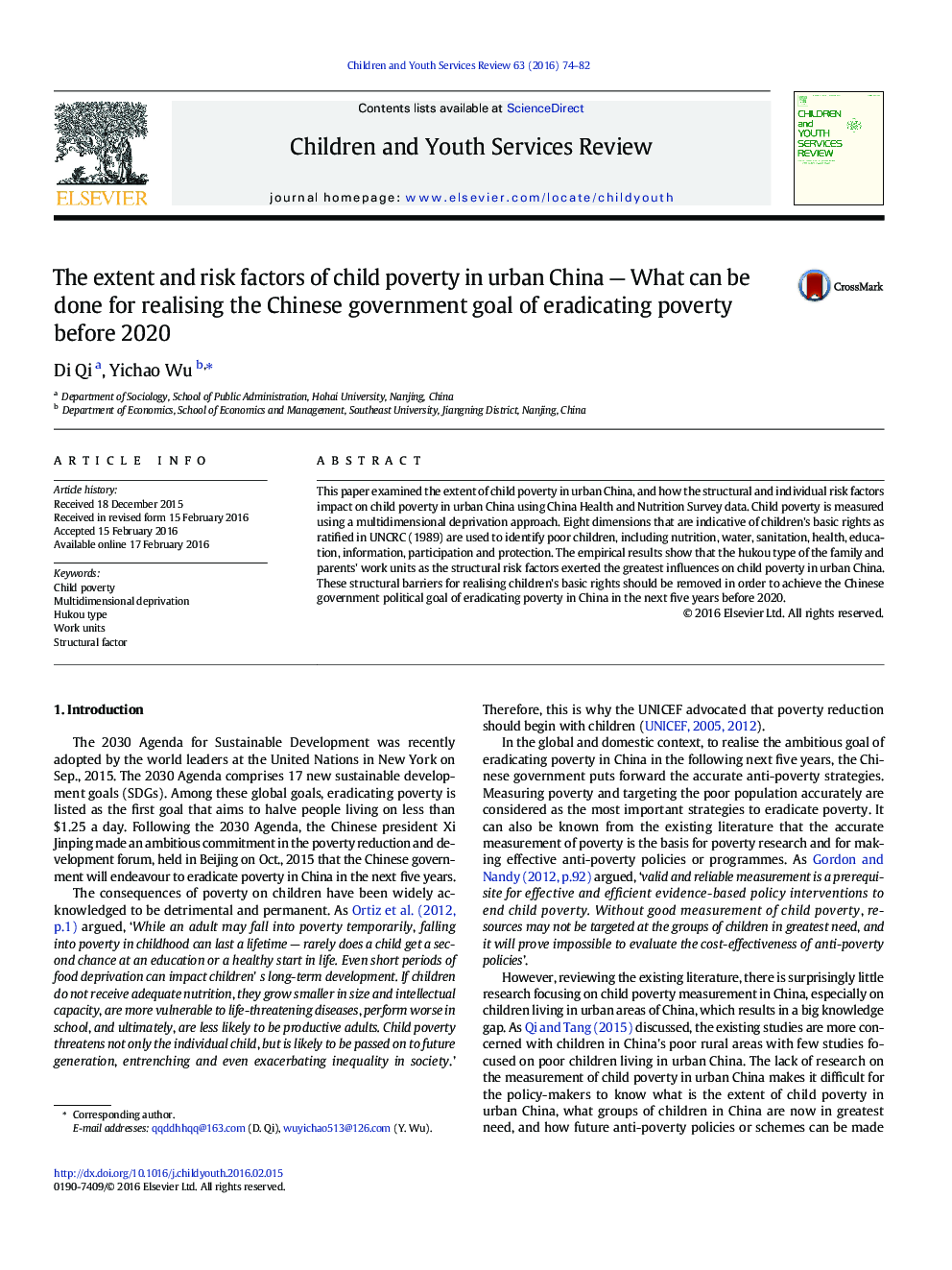| کد مقاله | کد نشریه | سال انتشار | مقاله انگلیسی | نسخه تمام متن |
|---|---|---|---|---|
| 345859 | 617771 | 2016 | 9 صفحه PDF | دانلود رایگان |
• This paper examined the child poverty in urban areas of China using a multidimensional deprivation approach
• This paper also analyzes how the structural and individual risk factors impact on child poverty in urban China
• The hukou type and parents’ work units as the structural risk factors exerted the greatest influences on child poverty
This paper examined the extent of child poverty in urban China, and how the structural and individual risk factors impact on child poverty in urban China using China Health and Nutrition Survey data. Child poverty is measured using a multidimensional deprivation approach. Eight dimensions that are indicative of children's basic rights as ratified in UNCRC (1989) are used to identify poor children, including nutrition, water, sanitation, health, education, information, participation and protection. The empirical results show that the hukou type of the family and parents' work units as the structural risk factors exerted the greatest influences on child poverty in urban China. These structural barriers for realising children's basic rights should be removed in order to achieve the Chinese government political goal of eradicating poverty in China in the next five years before 2020.
Journal: Children and Youth Services Review - Volume 63, April 2016, Pages 74–82
